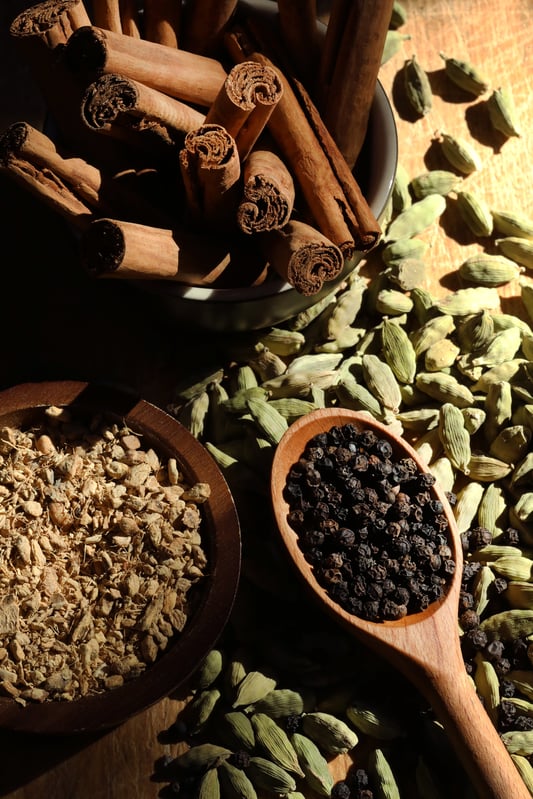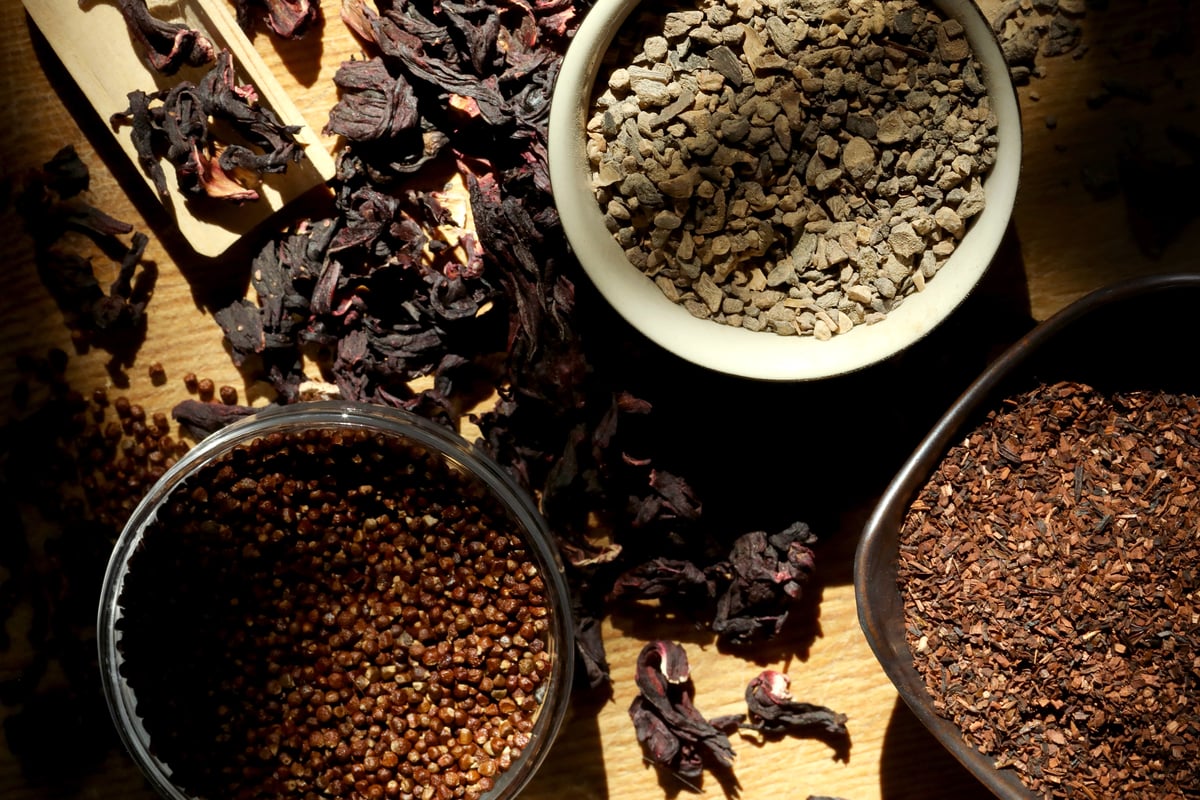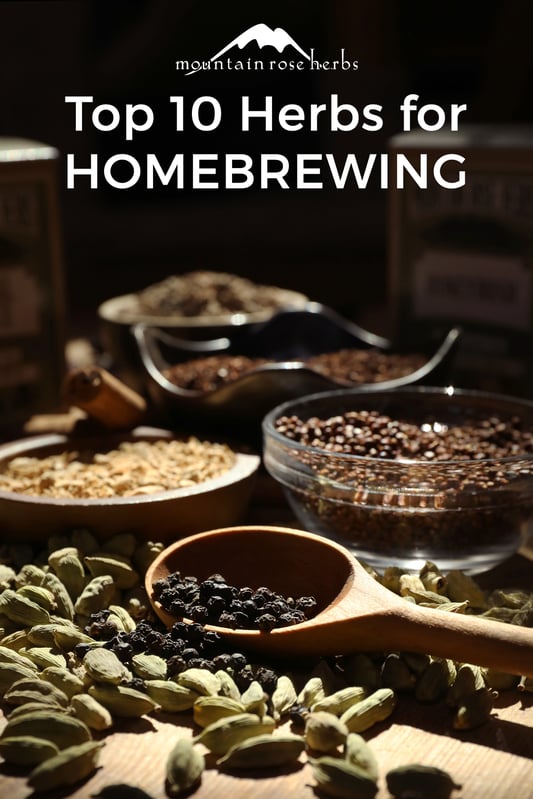 Humans have been brewing beer for millennia, and in that time, we have incorporated countless ingredients into our ferments. From bright, citrusy witbiers to rich herbal gruits, there’s a flavor profile to suit most any taste—and many of the ingredients to achieve it can be found in your home apothecary or kitchen spice rack!
Humans have been brewing beer for millennia, and in that time, we have incorporated countless ingredients into our ferments. From bright, citrusy witbiers to rich herbal gruits, there’s a flavor profile to suit most any taste—and many of the ingredients to achieve it can be found in your home apothecary or kitchen spice rack!
Top 10 Herbs & Spices For Flavoring Beer
 Cardamom
Cardamom
Herbal, black pepper, mint, citrus, and pine notes contribute to cardamom's intoxicating and complex aroma. This lively botanical is at home in Belgian styles but is also delicious in warming porters and stouts. If you’re looking to feature the spicier notes of cardamom in your brews, hulled cardamom is the way to go. Using whole cardamom seeds impart a sweeter, softer, and more floral aroma with subdued herbal notes.
Cinnamon
There are two main varieties of cinnamon: cassia (Cinnamomum burmanni) and sweet or Ceylon (Cinnamomum verum). Each will impart different flavors to your beer. When you’re looking to up the spice factor, cassia, with the classic “Big Red” cinnamon flavor, is the variety you’re seeking. Sweet cinnamon still packs a punch, but it’s much more nuanced with soft floral and sweet spun sugar notes.
Smoked Black Peppercorns
These flavorful black peppercorns are smoked over a blend of seven different kinds of wood to create a rich and balanced smoky bouquet. They are fun to use anywhere you would use black pepper or to add to a layered peppery phenol character to a flavor blend.
Fenugreek Seed
Fenugreek is often utilized in Indian, Egyptian, and Middle Eastern cuisines, but it is used the world over as a way to add a maple flavor to food and drink. The seeds have strong toasted sugar and butterscotch aromas that also impart a touch of neutral bitterness. Fenugreek is a great choice when you want to add a taste of maple that won’t ferment out, as will happen if you try to use actual maple syrup.
Ginger Root
Piquant and pungent, ginger is a classic brewing spice. It's used in a wide variety of beer styles from a golden Tripel to a fiery stout. Often found in traditional mulling spice blends, ginger pairs well with cardamom, cinnamon, and other warming herbs.
Grains of Paradise
These little reddish-brown seeds from the ginger family pack a whole lot of flavor into a small package. Grains of paradise have the zest of ginger, the spiciness of black pepper, and a camphoraceous yet bright lemony finish. They play wonderfully with the ester and phenol profiles of Belgian beers or anywhere you would use peppercorns.
Herbal Coffee
While not a single spice, this roast-forward earthy blend has hints of chocolate and caramel that are wonderful in a porter or stout. This herbal coffee blend was the inspiration behind my Deep Roots Gruit Porter.
Orris Root
The root of showy iris plants, this botanical is deeply floral. With most herbs used in brewing, a little goes a long way. That is particularly true of orris root, where less than a pinch can flavor 5-gallons. It is often used in gin for its floral qualities, but it is also used for its fixative properties of other botanical aromas.
Hibiscus Flower
Hibiscus features a lightly floral and tart-berry fruitiness that shines in lighter beers. If you’re looking to maximize the vibrant red color, add it with your first hop addition. To pick up its subtle flavors and aromas and a lighter pink hue, add it closer to the 5- to 10-minute mark. One thing to keep in mind when formulating your recipe is that hibiscus contains tannins like those found in red wine so the longer it has contact with your wort or must, the more tannins you will extract.
Honeybush Tea
Organic honeybush tea offers a naturally sweet amber flare to your creation. To highlight the subtle notes of wildflowers and delicious berries, add honeybush at flameout as boiling will drive off the delicate aromas. The cut size on this herb tends to be small, so you will want to use a fine mesh hop bag or a cotton muslin bag secured to the top of your kettle.
We hope that this inspires some creative new flavors for you to try. Please share some of your creations with us in the comments below!
Want to Put Your Brewing Botanicals Into Action?
Try This Herbal Witbier!
You might also enjoy:











